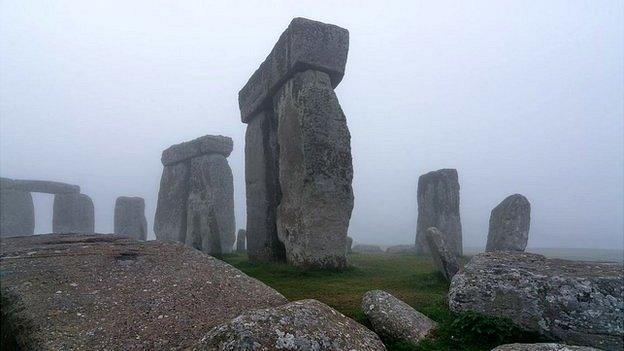'New Stonehenge' at Durrington Walls 'had no standing stones'
- Published
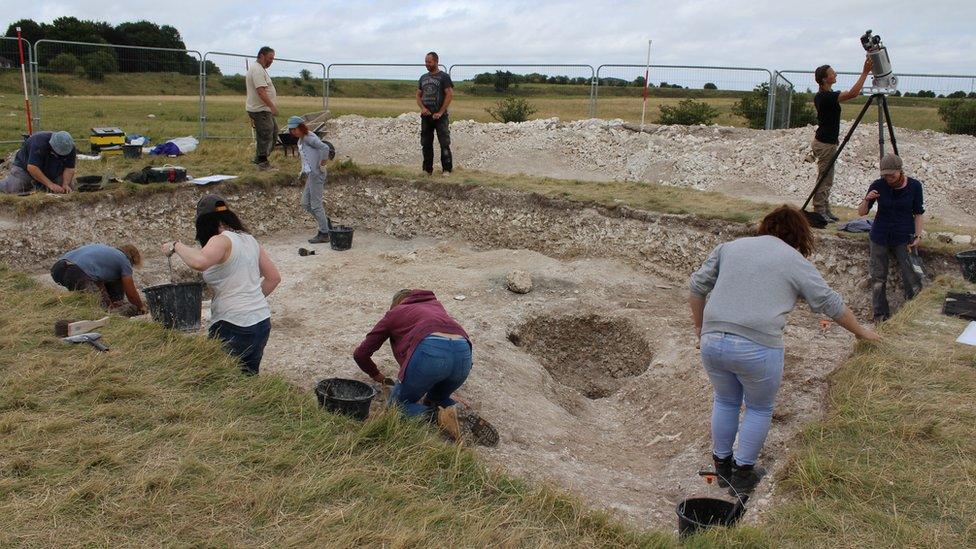
A dig at Durrington Walls has shown there were no standing stones at the site
A 4,500-year-old monument experts thought was "another Stonehenge" is now understood to have not contained any standing stones at all.
Archaeologists digging at Durrington Walls - about two miles from Stonehenge - said they now believed the Neolithic site was surrounded by timber posts.
Last year they said a survey showed evidence of "a Superhenge" of more than 100 buried stones at the site.
But no evidence of stones was found during an excavation.
Pits that contained wooden posts have been found.
The Stonehenge Hidden Landscapes Project has been surveying an area covering 16 sq km near Stonehenge for the past six years using geophysical survey techniques.
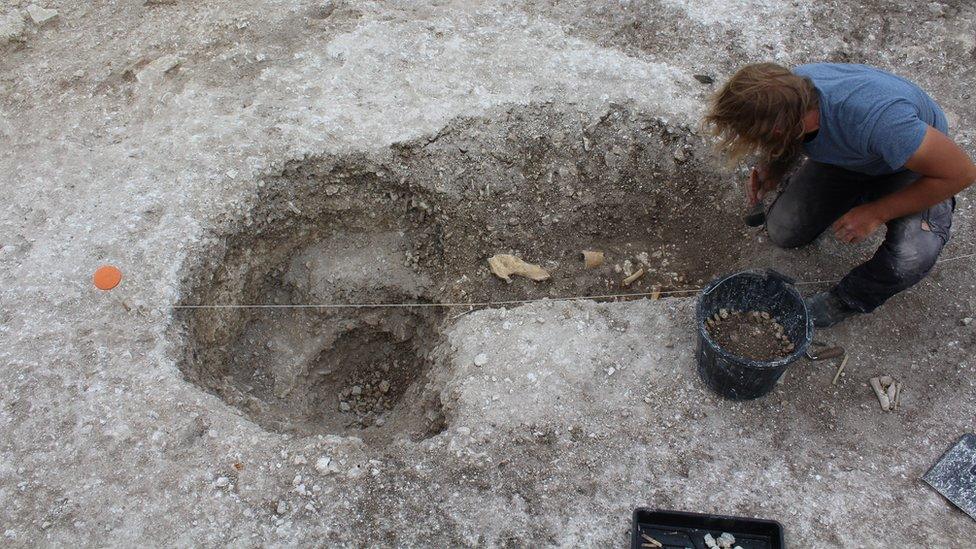
Archaeologists said they now believed huge timber posts were used in the monument
National Trust archaeologist Dr Nicola Snashall said ground penetrating radar had revealed "anomalies" that were originally believed to be buried stones.
"The response from the radar was so good that the team thought they were dealing with a whole series of stones lying on their side, buried beneath the bank of this ancient earthwork."
Two of the features have now been excavated, and the stones theory has been disproved.
"What we've discovered are that there are two enormous pits for timber posts. They have got ramps at the sides to lower posts into.
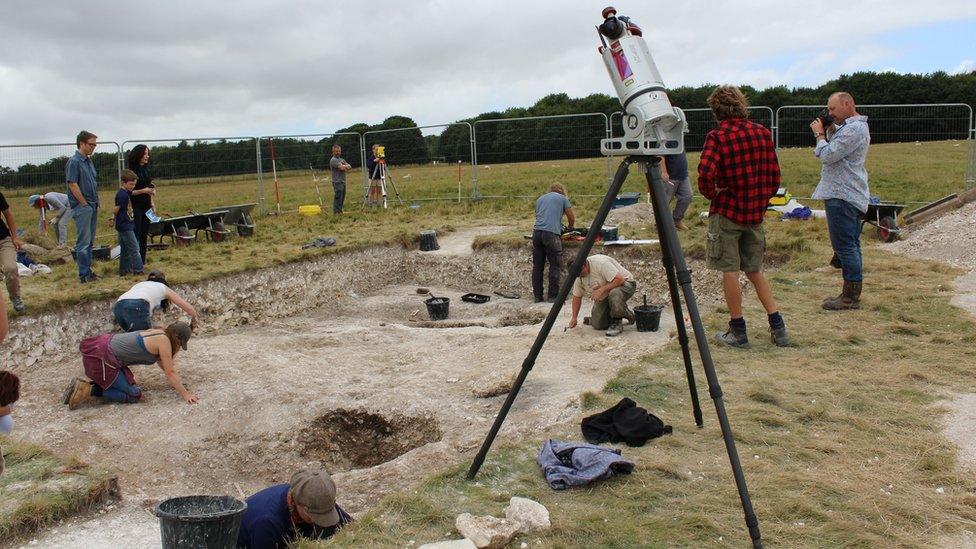
The area near Stonehenge has been surveyed for the past six years
"They did contain timbers which have been vertically lifted out and removed at some stage.
"The top was then filled in with chalk rubble and then the giant henge bank was raised over the top."
Dr Snashall said it was thought the giant timber monument was was put up immediately after a settlement on the site, that belonged to the builders of Stonehenge, went out of use.
"For some strange reason they took the timbers out and put up the enormous bank and ditch that we see today."
The Durrington Walls monument, which is about 480m (1,500 ft) across, is just under two miles (3km) from the famous Stonehenge site in Wiltshire.
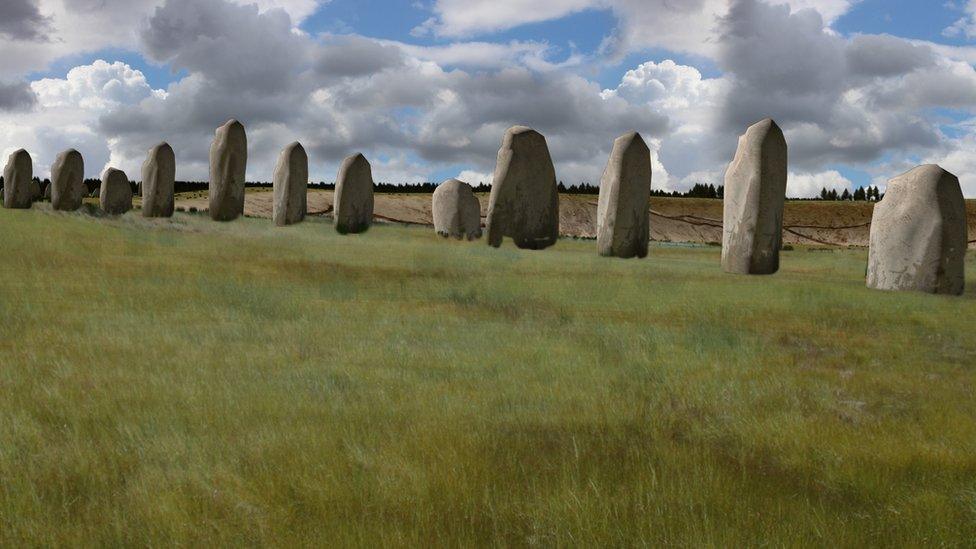
Archaeologists originally said they thought there were more than 100 standing stones at the site (artist's impression)
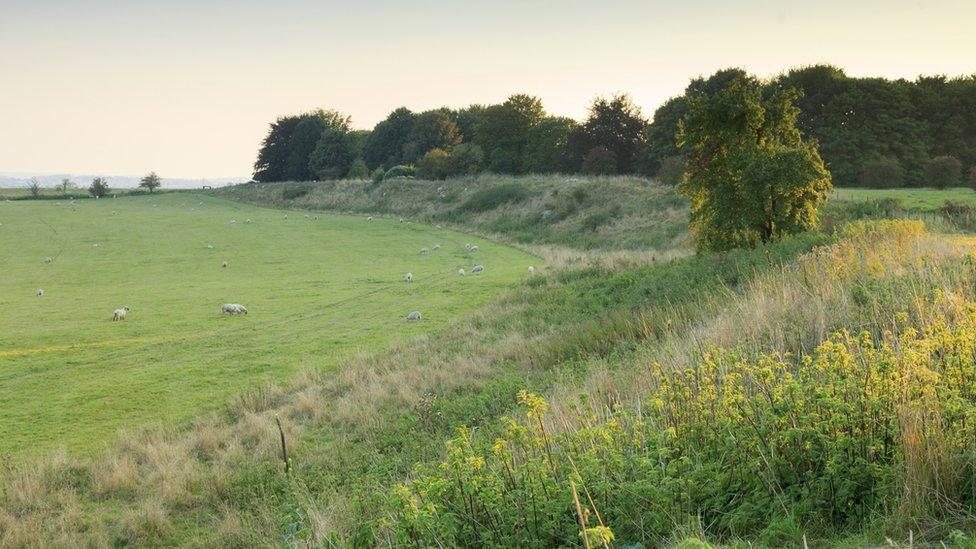
Durrington Walls is just under two miles from Stonehenge
- Published7 September 2015

- Published10 September 2014
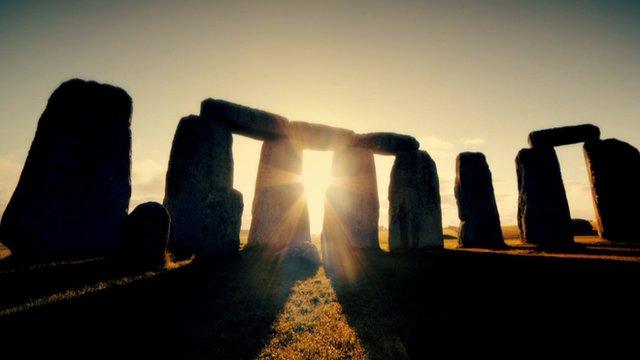
- Published10 September 2014
